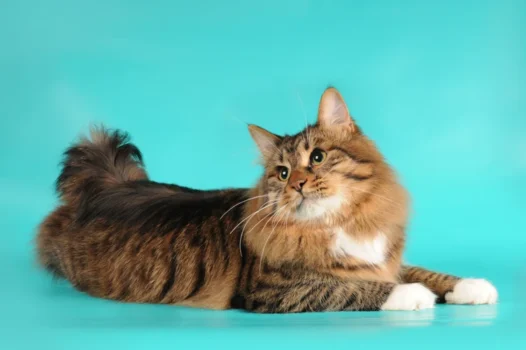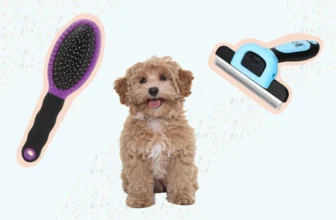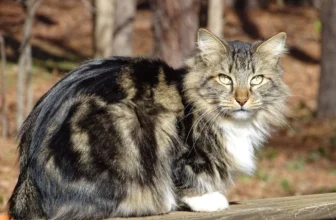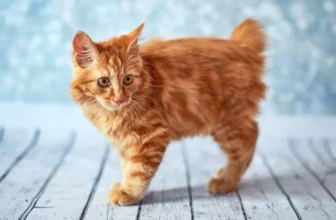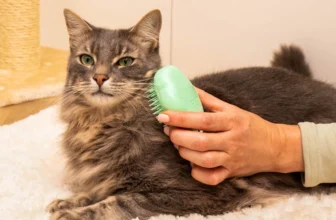As a proud American Bobtail cat owner, you love your furry friend with all your heart. However, one aspect of cat care that can be overwhelming is trimming their nails. You don’t want to hurt your precious pet, but their claws grow and can potentially harm both you and your furniture. Understanding the anatomy of your American Bobtail’s nails and how to properly trim them is crucial for their health and safety. In this comprehensive guide, we will break down the structure of a cat’s nail, explain why nail trimming is important, and provide step-by-step instructions on how to safely trim your American Bobtail’s nails. By the end of this article, you’ll feel confident in taking care of your cat’s nails and strengthening your bond in the process.
Anatomy of American Bobtail Cat’s Nails
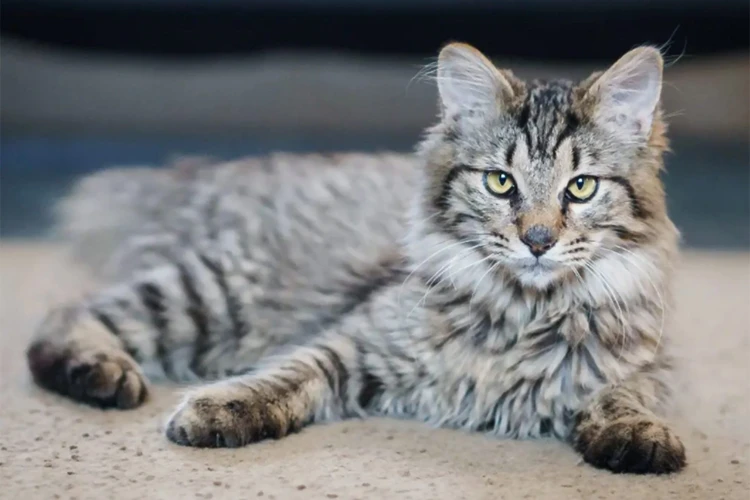
Understanding the anatomy of your American Bobtail cat’s nails is essential to ensure safe nail trimming without causing any injuries to your furry friend. The nails of your American Bobtail cat are made up of several unique parts that serve different purposes. With a thorough understanding of the anatomy of their nails, you can easily determine the correct way to trim them to promote their overall health and well-being. In the following sections, we’ll explore the various parts of your cat’s nails and their significance. Additionally, we’ll cover everything you need to know about why nail trimming is important and how to do it the right way. It’s important to note that improper nail trimming can cause severe pain and bleeding, resulting in infections or other nail problems. So, let’s delve deeper into the anatomy of your American Bobtail cat’s nails! If you want to go straight to the part about “When and How Often to Trim Your American Bobtail’s Nails,” visit this page.
Structure of a Cat’s Nail
The structure of a cat’s nail is different from human nails. The claw is made up of a hard, protective outer layer called the claw sheath and a softer inner core called the quick. The claw sheath is made of keratin, the same material found in human hair and nails.
The table below shows the different parts which make up an American Bobtail cat’s nail:
| Part | Description |
|---|---|
| Claw Sheath | The hard, protective outer layer of the nail. |
| Quick | The soft, sensitive inner core of the nail that contains blood vessels and nerves. It provides the blood supply and sensation to the claw. |
| Nail Bed | The tissue that supports the claw and helps to guide its growth. |
| Digital Cushion | The fatty pad that sits beneath the ball of the foot and helps to absorb shock when the cat jumps and runs. |
It’s important to be aware of each part of your American Bobtail’s nail to understand the risks involved in nail trimming. Cutting into the quick can be painful and cause bleeding. Understanding the nail’s anatomy will help you avoid causing harm during nail trimming, which can otherwise cause your cat to develop nail problems and discomfort. To learn more about how to trim your American Bobtail’s nails safely and effectively, please visit our article: Nail Trimming for American Bobtail Cats.
The Quick
The quick is the pink-colored vein inside your American Bobtail cat’s nail. It contains nerves and blood vessels, and if cut, can bleed and cause pain for your pet. It’s important to identify where the quick is before trimming your cat’s nails to avoid any accidents.
Here is a breakdown of the quick and claw sheath anatomy:
| Part | Description |
|---|---|
| Quick | The pink-colored vein that runs through the center of the nail |
| Claw Sheath | The clear outer layer of the nail that surrounds the quick |
Knowing where the quick is located can be difficult, especially if your cat has dark nails. One way to locate the quick is to look for a small black dot on the tip of the nail, which indicates the quick’s location. Another method is to gently press on your cat’s paw pad to extend the nail so that you can see the quick.
It’s important to note that the quick can be longer on some nails than others, so take extra care when trimming those nails. Cutting the quick can be painful for your cat, and may cause bleeding that can be difficult to stop. In case of accidental nail trimming, apply pressure with a clean cloth to stop the bleeding. If bleeding does not stop, contact your veterinarian for advice.
Remember, trimming your American Bobtail cat’s nails can be a tedious process, but it is important for their health and well-being. Taking the time to understand the anatomy of their nails, as well as the appropriate trimming techniques, can help ensure a successful and pain-free experience for both you and your furry friend. If you want to learn more about nail trimming, please refer to our article “Nail Trimming for Your American Bobtail Cat: A Step-by-Step Guide” or if you need to know specifically how to cut American Bobtail cat’s nail, check out “American Bobtail Cat Nail Cut: Techniques and Tips“.
Claw Sheaths
The claw sheath is a hard covering that encases the actual nail of your American Bobtail cat. It is made of keratin, the same substance that makes up human nails. These sheaths protect the claws from wear and tear, allowing the cat to retract and extend the claws effortlessly. It also helps the cat to keep its sharp claws hidden when not in use, which reduces the risk of accidentally injuring humans or damaging furniture.
Claw sheaths continually grow, so they must shed and be replaced with new ones periodically. The process is typically painless and goes unnoticed by the cat. When the claw sheaths grow too long or don’t shed on their own, your cat may experience discomfort or pain, which can lead to health problems. That’s why regular nail trimming is essential for your cat’s well-being.
Here is an overview of the claw sheath and how it functions:
| Part of Claw Sheath | Description |
|---|---|
| Epidermis | The outermost layer of the claw sheath. |
| Extracellular matrix | A gel-like substance that helps anchor the claw sheath to the nail bed. |
| Intermediate layer | A layer of dense fibrous tissue that provides strength and flexibility. |
| Inner layer | A mosaic layer of protein and calcium that gives the claw sheath its rigidity. |
| Quick | The sensitive area of the nail that contains blood vessels and nerves. It is essential to avoid cutting the quick during nail trimming. |
By understanding the anatomy of your American Bobtail’s claws and the function of the claw sheaths, you can help keep your cat healthy and comfortable. Regular nail trimming is a key component of your cat’s grooming routine and helps prevent common problems such as overgrown nails or painful ingrown claws. To learn more about nail trimming techniques, read our article on bobtail cat nail trimming.
Why is Nail Trimming Important?
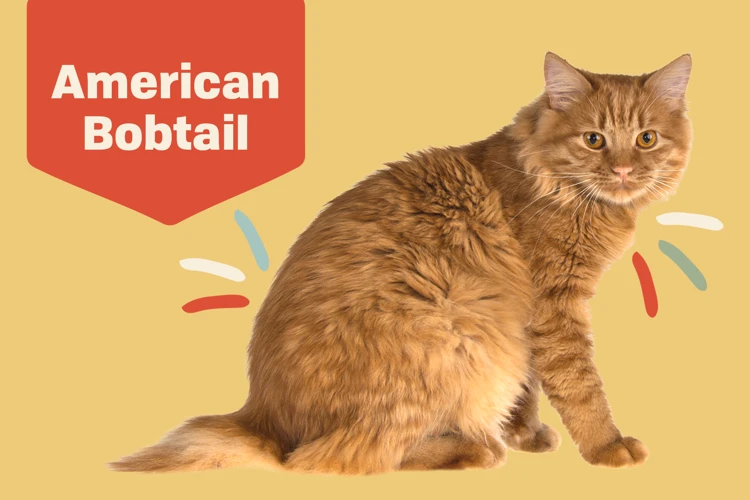
Keeping your American Bobtail’s nails trimmed is crucial for their health and well-being. Overgrown nails can lead to a host of problems, including discomfort while walking, difficulty in retracting their claws, and the nails getting caught in carpets, clothing, and furniture.
Long nails can also damage your furniture and promote scratching behavior, which can be a nuisance. By keeping your cat’s nails short, you can reduce their desire to scratch furniture and other household items since they will not have the sharp, long claws to do so.
Another crucial reason to trim your American Bobtail’s nails is to prevent them from developing ingrown nails. A long nail can easily curl and grow into the paw pad, causing pain and discomfort for your feline friend. Long nails can also trap dirt, debris, and bacteria, resulting in the development of infections.
If your Bobtail enjoys being a lap cat or a cuddle buddy, overgrown nails can be dangerous for you. Long nails can easily scratch your skin or cause accidental injuries, especially if your cat gets startled or tries to move suddenly.
Lastly, taking care of your cat’s nails by trimming them regularly promotes a stronger bond between you both. When you can handle their paws and trim their nails without them struggling or getting upset, it builds trust and demonstrates your love and care for them.
Trimming your American Bobtail’s nails is an essential part of their overall health and happiness.
When and How Often to Trim Your American Bobtail’s Nails
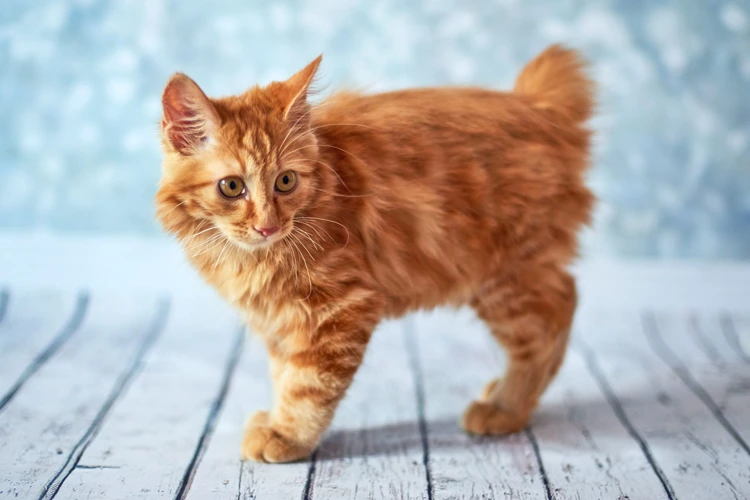
Keeping your American Bobtail’s nails trimmed is an essential part of their overall health and wellbeing. But when and how often should you trim their nails?
The answer to this question can vary depending on your cat’s lifestyle and nail growth rate. Indoor cats that don’t scratch or climb as much may need their nails trimmed less frequently than outdoor cats that are more active. As a general rule, it’s recommended that you trim your cat’s nails every 4-6 weeks.
It’s important to keep an eye on your American Bobtail’s nails and trim them before they get too long. Overgrown nails can cause discomfort and affect your cat’s ability to walk properly. They can also become ingrown, leading to pain and infection.
But how do you know when it’s time to trim your cat’s nails? Look for signs such as clicking noises when they walk on hard surfaces, or visible length of the nail protruding past the paw pad. If in doubt, consult with your vet or a professional groomer.
When it comes to the actual trimming process, it’s best to do it when your cat is relaxed and calm. Choose a time when they’ve just woken up or after a play session when they’re feeling tired. Avoid trying to trim their nails when they’re hyper or agitated, as this could lead to injury for both you and your cat.
Regular nail trimming is an important part of your American Bobtail’s grooming routine. Keeping their nails at a healthy length can prevent discomfort, injury and even make them more comfortable when walking and playing. Remember to keep an eye on your cat’s nails and don’t hesitate to ask for professional help if you’re unsure about how to trim them safely.
How to Trim Your American Bobtail’s Nails
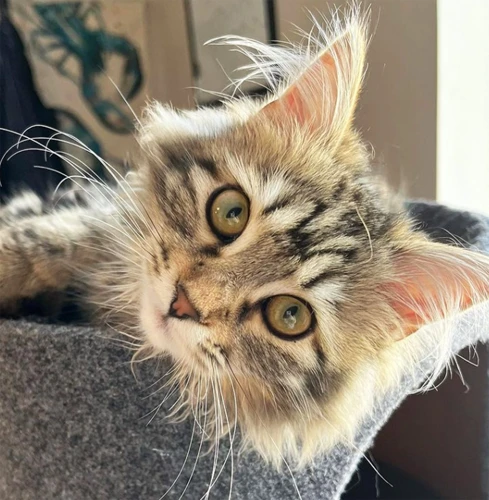
As a responsible owner of an American Bobtail, nail trimming should be a part of your regular grooming routine. It can seem like a daunting task, but with the right tools and techniques, it can be done safely and easily at home. In this section, we’ll go over the step-by-step process of trimming your cat’s nails, including the tools you’ll need, how to trim without causing harm, and how to handle potential accidents. By the end of this guide, you’ll be a pro at keeping your cat’s nails healthy and trimmed.
Tools You’ll Need
To trim your American Bobtail cat’s nails safely and effectively, you’ll need a few essential tools. These include:
- Nail Clippers: Choose a high-quality pair of cat nail clippers, preferably ones specifically designed for cats. Avoid using human nail clippers or scissors, which can crush your cat’s nails or cause pain and injury.
- Styptic Powder: It’s always a good idea to have styptic powder on hand in case you accidentally clip the quick and cause bleeding. This powder helps to stop the bleeding quickly and safely.
- Treats: Cats may be apprehensive when it comes to getting their nails trimmed. Having treats on hand can help keep them calm and reward them for good behavior during nail trimming sessions.
- Towel: A towel is useful for wrapping your cat and keeping them in place during nail trims. A towel will also protect you from accidental scratches.
By having these essential tools available, you can provide your American Bobtail cat with safe and stress-free nail trimming sessions. Regularly trimming your cat’s nails is not only essential for their overall health and well-being but also for maintaining a clean and tidy household.
The Trimming Process
When it comes to trimming your American Bobtail cat’s nails, it’s essential to follow a proper process to avoid causing your feline friend any discomfort or pain. Here is a step-by-step guide to help you trim your cat’s nails safely and effectively:
Step 1: Choose the Right Day and Time
Choose a day and time when your cat is feeling relaxed and calm. Avoid trimming your cat’s nails when they are agitated or anxious as this can make the trimming process much more challenging.
Step 2: Position Your Cat Comfortably
Make sure that your cat is in a comfortable position. You may want to place them on your lap facing away from you or on a flat surface that is at a comfortable height for you to work with. If your cat is feeling uneasy, you can try using a towel to help immobilize them gently.
Step 3: Identify the Quick
Look at your cat’s nail and identify the quick. The quick is the pink part of the nail that contains blood vessels and nerves. You should be careful not to trim into the quick as this can cause discomfort and lead to bleeding.
Step 4: Use the Right Tool
Choose the right tool for the job. There are different types of nail clippers that you can use for your cat’s nails. Some people prefer to use scissor clippers, while others prefer the guillotine-style clippers. You can also use a nail grinder that files down the nails gradually.
Step 5: Trim the Nail
Hold your cat’s paw firmly and use your chosen tool to trim the nail. Be sure to cut just below the quick, at a 45-degree angle. Avoid cutting too close to the quick as this can cause your cat pain and bleeding.
Step 6: Repeat for All Nails
Repeat the process for all of your cat’s nails. Take breaks in between and reward your cat with treats and affection to help them feel relaxed and comfortable during the process.
Step 7: Finishing Touches
After trimming all of your cat’s nails, you can use a nail file to smooth out any rough edges. This will help prevent your cat from getting their claws caught in fabrics and unintentionally causing damage.
By following this step-by-step guide, you can safely and effectively trim your American Bobtail cat’s nails. Remember to always take your time, be patient, and use positive reinforcement to help your cat associate nail trimming with positive experiences.
Dealing with Accidents and Bleeding
Unexpected accidents can happen during nail trimming, even with the most careful cat owner. If you accidentally trim into the quick, you may see some bleeding. This happens because the quick contains blood vessels and nerve endings, which makes it very sensitive.
Here’s what to do if your American Bobtail’s nail starts to bleed:
| Step 1: | Stay calm – your cat can sense if you’re anxious, which may make the situation worse. |
| Step 2: | Apply pressure to the nail with a clean cloth or tissue. Firm pressure for a few minutes is usually enough to stop the bleeding. |
| Step 3: | If bleeding continues, use a styptic powder or pencil to stop the bleeding. These products contain a natural coagulant (such as aluminum sulfate or kaolin clay) that can help to staunch the flow of blood. Apply the powder or pencil directly to the nail and hold for several seconds. Be aware that these products can sting a bit, so your cat may produce a yelp or two during the process. |
| Step 4: | Give your American Bobtail plenty of love and reassurance. Accidents happen, and it’s important to show your cat that everything is okay. Give your kitty a treat or a bit of extra attention to help calm them down. |
It’s important to note that: bleeding should stop on its own in a few minutes. If bleeding persists or you are concerned about your American Bobtail’s health, contact your veterinarian for further advice.
It’s also important to avoid punishing or scolding your cat for any accidents. Remember, trimming their nails is a new and potentially stressful experience for them. Praise and positive reinforcement can go a long way in making nail trimming a pleasant experience for both you and your feline friend.
Training Your Cat to Enjoy Nail Trimming
Training your American Bobtail cat to enjoy nail trimming is essential to make the process stress-free and enjoyable for both you and your furry friend. Follow the steps below to make your cat like nail trimming:
- Positive Reinforcement: Use positive reinforcement techniques such as treats, praises or play as a reward for good behavior during and after the nail trimming sessions.
- Start Slow: Begin by handling your cat’s paws more often and gradually introduce the nail trimming tools such as the clippers, to make your cat more comfortable with them.
- Maintain a calm environment: Keeping a calm environment during the nail trimming process is ideal for your cat to feel relaxed and less scared. Play soothing music or use pheromone sprays to create a calm and soothing environment.
- Praise good behavior: Praise your feline friend for good behavior during the nail trimming process, and reward with treats to reinforce positive behavior during & after the nail trimming session.
- Opt for nail caps: Some cats may be more comfortable with nail caps. Nail caps are a good option for cats who are uneasy about nail trimming. They are glued to the cat’s nails and are replaced every few weeks, so they do not cause any discomfort to your feline friend.
With patience and consistency, training your American Bobtail cat to enjoy nail trimming will prove to be less daunting and make the process less stressful for both you and your kitty.
Alternative Nail Trimming Techniques
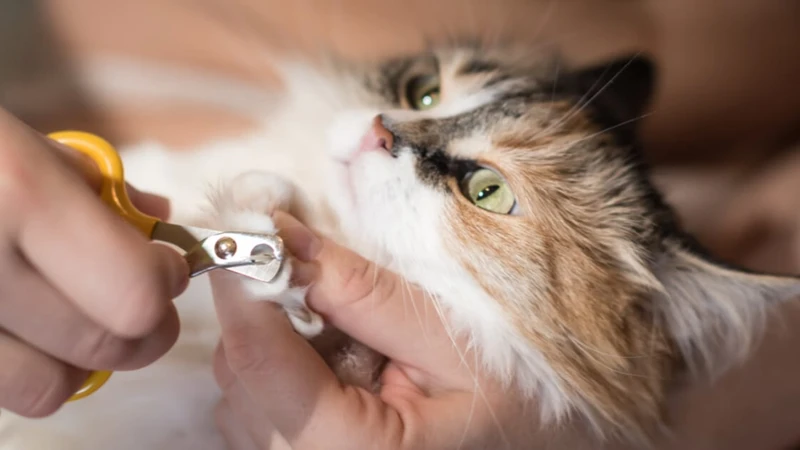
If your American Bobtail cat is afraid of traditional nail clippers or you’re looking for an alternative method to trim their nails, there are a few options to consider. One alternative technique is using a nail file or emery board. With this method, you will file your cat’s nails down little by little until they are at the desired length.
To use a nail file, make sure your cat is comfortable and relaxed. Hold their paw gently, and use the nail file to slowly and carefully file down the tip of each nail. Be sure to file in one direction only, as filing back and forth can cause splitting or damage to the nail.
Another alternative method to trim your American Bobtail cat’s nails is the use of nail caps. These are tiny plastic covers that are glued to your cat’s nails, preventing them from scratching surfaces and people while also protecting against nail damage. Nail caps are designed to fall off naturally as the cat’s nails grow, typically requiring replacement every four to six weeks.
Lastly, if your cat is particularly anxious or you are worried about harming them during nail trimming, it may be helpful to schedule a visit to a professional groomer or veterinarian who can take care of the task safely and without causing unnecessary stress for you or your furry friend.
No matter which alternative method you choose, it’s important to monitor your cat’s nails regularly and ensure that they are not becoming too long or causing any discomfort or pain. And as always, positive reinforcement and treats can go a long way in making the experience a positive one for your cat.
Other Tips for Caring for Your American Bobtail’s Paws
Taking care of your American Bobtail’s paws is an essential part of their overall health and well-being. Here are some tips to help you provide the best paw care for your feline companion:
Regular Paw Inspections
Performing regular paw inspections is important to detect any potential problems early on. Look for any signs of swelling, redness, or cuts on their pads or between their toes. If you notice any abnormalities, consult your veterinarian.
Paw Hygiene
Your American Bobtail’s paws can easily accumulate dirt, dust, and bacteria, which may lead to infections. Regularly cleaning their paws with a damp cloth can help prevent this. Additionally, keeping their litter box clean can also help maintain good paw hygiene.
Paw Massage
Paw massages can help improve circulation and alleviate stress in your cat. Simply massage their pads gently using your fingertips. This can also be a great bonding experience for you and your American Bobtail.
Paw Protection
If you have an outdoor cat or if your cat likes to scratch furniture, consider investing in paw protection products such as soft paws or scratching posts. Soft paws are plastic nail caps that can be glued onto your cat’s claws. Scratching posts provide a safe and natural outlet for your cat to satisfy their scratching needs.
Paw Health Supplements
There are various paw health supplements available that can help improve the overall health of your cat’s paws. These supplements can improve circulation, soothe soreness, and promote healthy paw pads. Consult your veterinarian before administering any supplements to your cat.
Paw Grooming
Regular grooming of your American Bobtail’s paws can help keep their fur clean and free from mats. Be sure to keep the fur between their toes trimmed short as well, as long fur can trap dirt and debris.
By following these tips, you can ensure that your American Bobtail’s paws are healthy, clean, and well-maintained. Remember, proactive paw care is key to your cat’s overall health and happiness.
Conclusion
After understanding the anatomy of your American Bobtail Cat’s nails and how to properly trim them, it’s important to remember the significance of nail care for your furry friend. Regular nail trimming can prevent painful and potentially harmful ingrown nails, as well as protect your furniture and other belongings from being scratched or damaged.
Additionally, if your cat isn’t used to nail trimming, don’t get discouraged if they don’t enjoy the process at first. It’s important to take the time and patience to properly train your cat and make nail trimming a positive experience for them.
In addition to nail trimming, other tips for caring for your American Bobtail’s paws include regularly checking for any wounds, cuts or other signs of injury, cleaning the paws as necessary, and keeping an eye out for any potential problems like limping or difficulty walking.
By taking proper care of your American Bobtail’s nails and paws, you can ensure that they remain happy and healthy members of your family for years to come. Remember, your cat’s well-being is always worth the extra effort and attention.
Frequently Asked Questions
How can I identify the quick in my American Bobtail cat’s nail?
The quick can be identified as a pinkish vein in the center of the nail. Be sure to avoid cutting into the quick, as it can lead to bleeding and discomfort for your cat.
What should I do if I accidentally trim my cat’s nail too short and it starts bleeding?
If you accidentally trim the nail too short and it starts bleeding, apply some styptic powder or cornstarch to the nail to help stop the bleeding. If the bleeding doesn’t stop, contact your veterinarian for assistance.
Should I use human nail clippers to trim my American Bobtail’s nails?
No, it is recommended to use specialized nail clippers designed for cats. Human nail clippers may cause injury to your cat’s nail or nail bed.
How often should I trim my American Bobtail’s nails?
You should aim to trim your cat’s nails every 2-4 weeks. However, each cat’s nail growth rate can vary, so be sure to monitor your cat’s nails regularly to determine when they need to be trimmed.
Can I take my American Bobtail to the groomer for nail trimming?
Yes, many groomers offer nail trimming services for cats. However, be sure to verify the groomer’s experience and qualifications before entrusting them with your cat’s care.
How do I calm my American Bobtail during nail trimming?
Providing treats or toys can help distract your cat during the nail trimming process. You can also try to make nail trimming a positive experience by praising your cat and giving them a treat after the process is completed.
Is it necessary to trim my cat’s back claws?
Back claws may not need to be trimmed as often as front claws, as they are typically worn down through everyday activities. However, it is still important to monitor your cat’s back claws and trim them as needed.
What are some signs that my cat’s nails are too long?
Signs that your cat’s nails are too long include snagging on surfaces, clicking noise while walking on hard floors, and visible curling or bending of the nail.
Can I file my cat’s nails instead of trimming them?
Yes, it is possible to file your cat’s nails using a specialized cat nail file. However, this process may take longer than traditional nail trimming and may not be suitable for cats who are easily agitated.
What should I do if my cat is resistant to nail trimming?
You can try to acclimate your cat to nail trimming by handling their paws regularly and offering treats during the process. If your cat is still resistant, it may be helpful to seek advice from a professional cat behaviorist.

